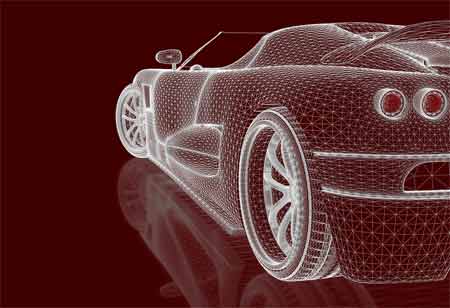THANK YOU FOR SUBSCRIBING
THANK YOU FOR SUBSCRIBING
Be first to read the latest tech news, Industry Leader's Insights, and CIO interviews of medium and large enterprises exclusively from Auto Tech Outlook

By
Auto Tech Outlook | Tuesday, June 18, 2024
Stay ahead of the industry with exclusive feature stories on the top companies, expert insights and the latest news delivered straight to your inbox. Subscribe today.
Integration exercises, splitting, ground reversal, and distal thinking enhance team creativity, fostering innovation and adaptability essential for navigating environments.
FREMONT, CA: In today's dynamic business environment, the imperative for creativity has transitioned from a luxury to an essential element for success. Organizations rely on the infusion of fresh perspectives, innovative problem-solving approaches, and the agility to navigate evolving landscapes. However, nurturing creativity within a team setting presents its own set of challenges. Individuals often become entrenched in routine, constrained by conventional thinking, and find it difficult to break free from established patterns.
This challenge is effectively addressed through structured team exercises. These activities are meticulously crafted to stimulate creativity, foster collaboration, and unlock a reservoir of novel ideas. By actively participating in these exercises, teams cultivate a more open mindset and strengthen interpersonal bonds, leading to a more innovative and adaptable workforce.
Integration
Encouraging participants to blend diverse perspectives and insights to generate innovative solutions involves a structured integration process. Initially, participants are divided into small groups, each tasked with synthesizing unrelated concepts, themes, or objects into a coherent whole. This prompts teams to brainstorm ways to integrate these disparate elements, fostering creativity and lateral thinking.
The process encourages the exploration of unconventional connections and combinations, challenging participants to think beyond conventional boundaries. Teams uncover unique solutions that capitalize on collective creativity by merging seemingly unrelated elements. This approach fosters a collaborative environment where diverse perspectives converge to generate novel ideas and solutions.
Facilitators provide support and guidance throughout the activity as teams navigate the integration process. Participants explore and experiment with different approaches by encouraging open dialogue and idea-sharing. Ultimately, the integration process culminates in group presentations, where teams showcase their integrated ideas and discuss the creative process, fostering a culture of innovation and collaboration.
Splitting
Splitting involves breaking down intricate ideas or issues into smaller, more manageable parts to facilitate analysis and exploration. This method aids participants in deconstructing challenges to gain deeper insights and devise practical solutions.
Participants are presented with a complex problem or challenge pertinent to their context to initiate the process. They are then tasked with visually representing the problem using a problem tree diagram, individually or in small groups. This diagram serves as a structured framework for categorizing the root causes, branches (subproblems), and leaves (symptoms) of the problem.
Subsequently, participants identify and categorize the elements of the problem tree, fostering a deeper understanding of the interconnectedness between different components. Facilitators encourage discussions on potential leverage points for intervention and strategies to address the identified issues effectively.
Through brainstorming sessions, teams generate solutions targeted at specific branches or root causes identified in the problem tree. This collaborative process promotes analytical thinking and equips participants with the tools to develop targeted strategies for tackling complex challenges in their respective contexts.
Ground Reversal
It prompts individuals to question established assumptions, perspectives, or paradigms to yield unconventional insights or solutions. Participants are encouraged to challenge the status quo and explore alternative viewpoints through a structured process.
Participants are initially presented with a familiar problem, process, or scenario. They are then tasked with identifying and scrutinizing the underlying assumptions or norms associated with the issue. This critical examination forms the foundation for generating new ideas and perspectives.
Following this, participants are prompted to brainstorm alternative approaches or viewpoints by deliberately reversing these assumptions. This reversal of conventional thinking stimulates creativity and encourages innovative thinking among participants.
Subsequently, a facilitated discussion ensues, focusing on the potential implications of adopting these unconventional viewpoints and the feasibility of implementing alternative solutions. This discussion encourages participants to evaluate the practicality and effectiveness of their revised approaches. Participants are encouraged to prototype and test their revised approaches in a low-risk setting. This iterative process allows teams to refine their ideas and assess their viability in real-world scenarios.
Distal Thinking
Distal Thinking involves surpassing immediate constraints or contexts to examine distant or future possibilities, aiming to inspire participants to envision long-term implications beyond the present. Introduce participants to future scenarios or trends pertinent to their industry or field. Then, prompt individuals or groups to envision potential outcomes or implications of this scenario over a long-term period. Encourage them to consider optimistic and pessimistic perspectives to explore various possible futures. Facilitate discussions on associated opportunities, challenges, and risks, fostering strategic thinking and planning.
Distal Thinking fosters a forward-looking perspective, prompting teams to anticipate emerging trends or challenges and prepare accordingly. By engaging in scenario planning and envisioning potential futures, teams proactively identify opportunities for innovation and adaptation. Encouraging participants to develop strategies for influencing or adapting to future outcomes based on their insights further enhances their preparedness for uncertainties and changes in their industry or domain.
Through exercises focusing on integration, splitting, ground reversal, and distal thinking, teams develop a comprehensive approach to creativity. These activities enable participants to merge diverse viewpoints, dissect intricate issues, question prevailing assumptions, and imagine potential futures. By nurturing a creative environment, organizations stimulate innovation and flexibility, essential for navigating dynamic environments.
 Copyright © 2025 AutoTech Outlook. All Rights Reserved | Privacy Policy | Subscribe | Sitemap | About us | Feedback Policy | Editorial Policy
Copyright © 2025 AutoTech Outlook. All Rights Reserved | Privacy Policy | Subscribe | Sitemap | About us | Feedback Policy | Editorial Policy 



